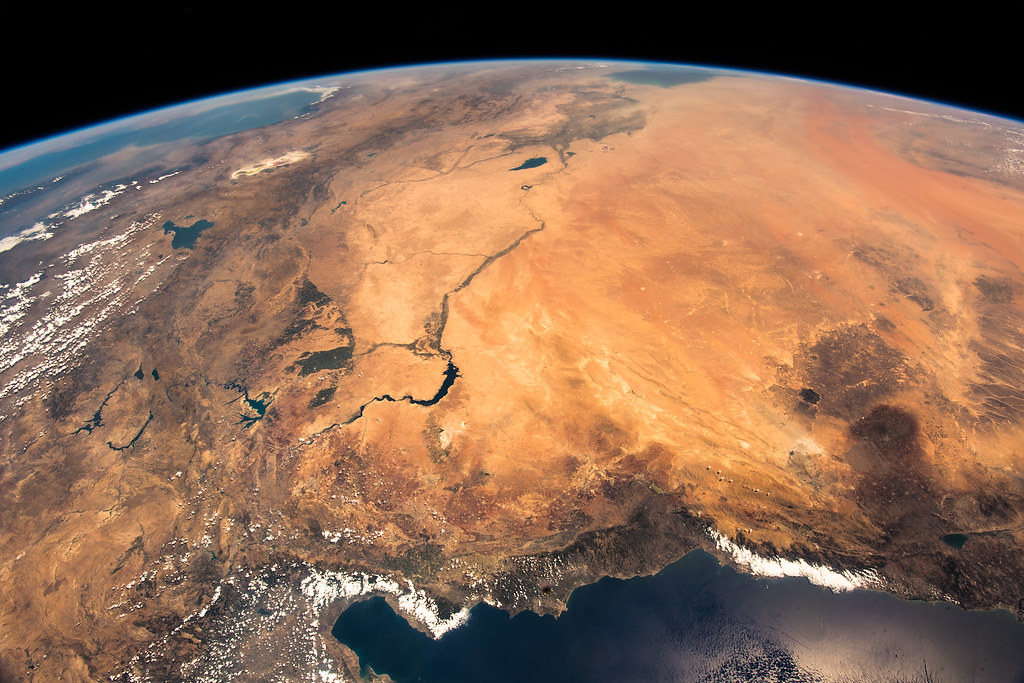13家在敘利亞和伊拉克工作的援助組織今(23日)警告,兩地現有超過1200萬人無法獲得水、食物和電力,需要緊急援助行動度過缺水危機。

氣候變遷加劇乾旱 兩國恐更多人流離失所
聯合國稱,敘利亞目前正面臨70年來最嚴重的乾旱,而伊拉克正面臨40年來第二大乾旱,降雨量創歷史新低。
整個敘利亞以及伊拉克地區,氣溫上升、創紀錄的低降雨量和嚴重乾旱正在剝奪人們的飲用水和農業用水。由於大壩缺水,電力供應中斷,進而影響了衛生設施等基礎建設的運作。氣候變遷導致的高溫正在增加乾旱的風險和嚴重程度。
「數百萬敘利亞人和伊拉克人即將斷水斷炊,」挪威難民委員會區域主任漢森(Carsten Hansen)警告, 「由於數十萬伊拉克人仍然無家可歸,還有更多人仍在敘利亞逃亡,缺水危機很快就會演變成一場前所未有的災難,導致更多人流離失所。」
伊拉克部分家庭 每月用水飆高至80美元
敘利亞有超過500萬人直接依賴幼發拉底河水生活,而在伊拉克,幼發拉底河和底格里斯河已無法取水,乾旱威脅著至少700萬人。
大約400平方公里的農業用地面臨完全乾旱的風險。
敘利亞北部,為300萬人提供電力的兩座大壩即將關閉。自從用水短缺以來,敘利亞的許多社區,例如哈塞克、阿勒頗、拉卡和代爾祖爾,以及難民營中流離失所者都出現腹瀉等水傳播疾病的爆發。
在伊拉克,大片農田、漁業、電力生產和飲用水的水資源供應枯竭。在伊拉克的尼尼微省,乾旱預計使小麥產量減少70%,而伊拉克庫德斯坦地區的小麥產量預計將下降一半。安巴爾省內一些無法獲得河水的家庭,每月花在用水的費用高達80美元(約2233新台幣)。
國際組織籲人道援助 提水危機改善方案
國際組織CARE的中東和北非地區總監蕭奇(Nirvana Shawky)說:「這個情勢下,該地區當局和捐助國政府應儘速採取行動拯救生命,這場乾旱危機與衝突、COVID-19和嚴重經濟衰退同時發生。長遠來看,除了緊急糧食和水之外,他們還需要投資永續的水危機解決方案。」
在距離哈塞克30公里的Al Sebat,許多村民因乾旱被迫遷往其他地區。「今年我們目睹了一波嚴重乾旱,我們的土地沒有辦法生產任何作物,沒有任何可供我們或我們的牲畜飲用的水源,」來自Al Sebat的一位部落首領說,「眼前的情況下,我們不得不離開農村地區,讓我們的土地荒廢,這令人氣憤。」
許多農民花光了積蓄並負債養活他們的動物。「乾旱讓我無法收穫任何小麥,」來自伊拉克尼尼微受災最嚴重的地區之一巴吉的居民說,「我現在負債累累。」
丹麥難民委員會中東地區主任嘉維(Gerry Garvey)說:「這場缺水危機勢必會變得更糟,可能會讓已經不穩定的地區情勢惡化。沒有時間可以浪費了,我們必須找到永續的解決方案,以保障今日和後代子孫的水和食物。」
More than 12 million people in Syria and Iraq are losing access to water, food and electricity and urgent action is needed to combat a severe water crisis, 13 aid groups working in the region warned today.
Syria is currently facing the worst drought in 70 years while Iraq is facing the second driest season in 40 years due to record low rainfall, according to the United Nations.
Across the region, rising temperatures, record low rainfall, and severe drought are depriving people of drinking and agricultural water.
The electricity supply is being disrupted as dams run out of water, which impacts the operations of essential institutions such as health facilities. Higher temperatures caused by climate change are increasing the risks and severity of the drought.
“The total collapse of water and food production for millions of Syrians and Iraqis is imminent,” warned Carsten Hansen, regional director for the Norwegian Refugee Council. “With hundreds of thousands of Iraqis still displaced and many more still fleeing for their lives in Syria, the unfolding water crisis will soon become an unprecedented catastrophe pushing more into displacement.”
More than five million people in Syria directly depend on the Euphrates River, while in Iraq the loss of access to water from the Euphrates and Tigris rivers, as well as drought, threaten at least seven million people.
Some 400 square kilometers (154 square miles) of agricultural land risk total drought.
Two dams in northern Syria, serving three million people with electricity, face imminent closure.
Syrian communities in Hasakah, Aleppo, Raqqa and Deir ez Zour, as well as displaced people in camps, have witnessed a rise in outbreaks of water borne diseases such as diarrhea, since the reduction in water.
In Iraq, water supplies are depleted across large swathes of farmland, fisheries, power production and drinking water sources.
In the Ninewa governorate, wheat production is expected to go down by 70 percent because of the drought, while in the Kurdistan Region of Iraq production is expected to decrease by half. Some families in Anbar who have no access to river water are spending up to US$80 a month on water.
CARE’s Regional Director in the Middle East and North Africa, Nirvana Shawky, said, “The situation demands that authorities in the region and donor governments act swiftly to save lives in this latest crisis, that comes on top of conflict, COVID-19 and severe economic decline. In the longer term, beyond emergency food and water, they need to invest in sustainable solutions to the water crisis.”
In Al Sebat, 30 km away from Hasakah, residents have seen scores of villagers leaving to other areas, forced out by the drought.
“This year we have witnessed a wave of intense drought and as a result our lands did not produce any crops and we don’t have any sources of drinkable water either for us or for our animals,” said Abdallah, a tribal leader from Al Sebat. “It is infuriating to think that the current conditions will force us to leave the rural areas and that our lands will be left as ruins.”
Many farmers have spent their savings and gone into debt to keep their animals alive.
“Because of the drought I was unable to harvest any wheat,” said Hamid Ali from Baaj, one of the worst affected districts in Ninewa, Iraq. “Now I am overwhelmed with debt.”
The Danish Refugee Council’s Middle East Regional Director Gerry Garvey said, “This water crisis is bound to get worse. It is likely to increase conflict in an already destabilized region. There is no time to waste. We must find sustainable solutions that would guarantee water and food today and for future generations.”
※ 全文及圖片詳見:ENS









